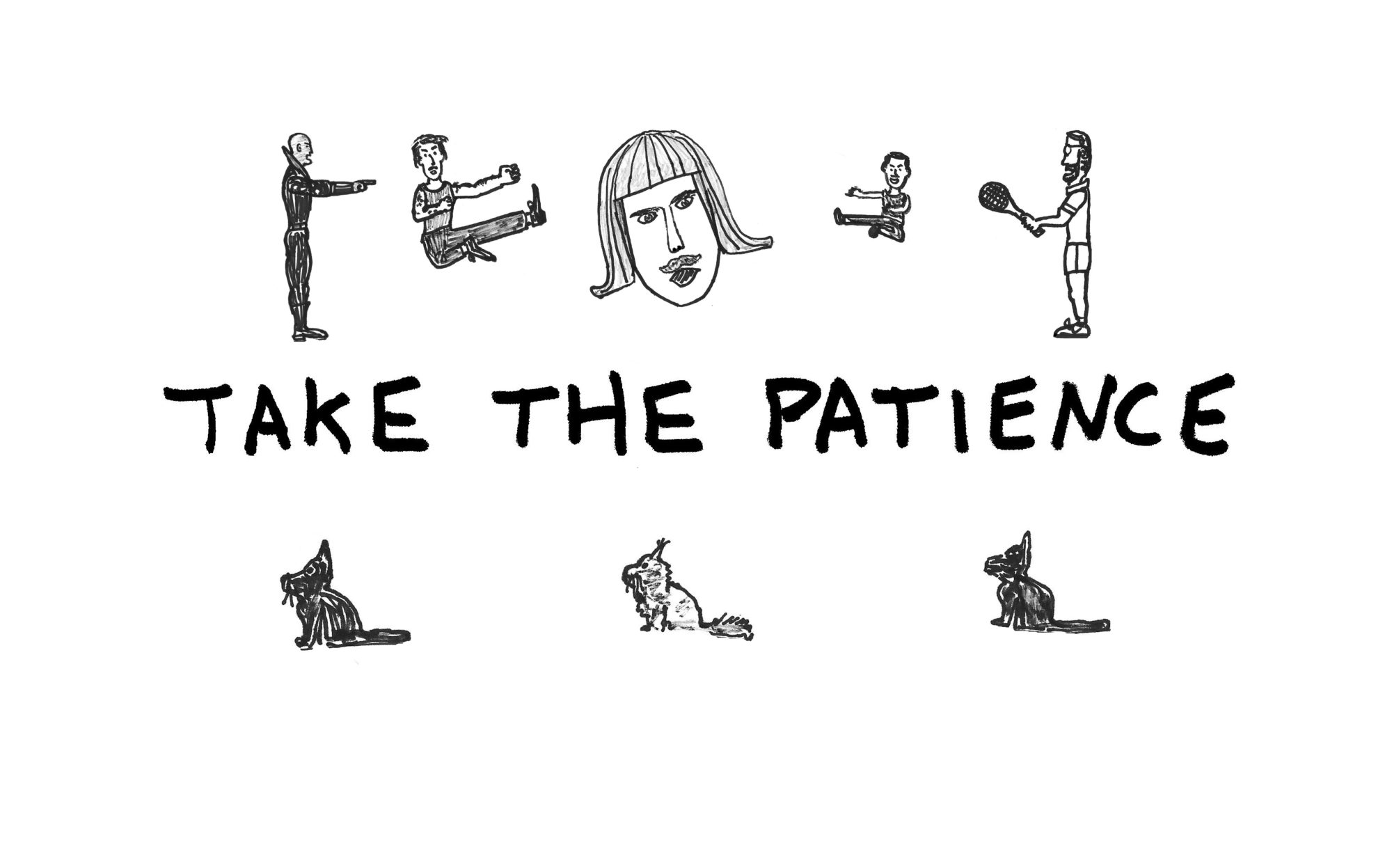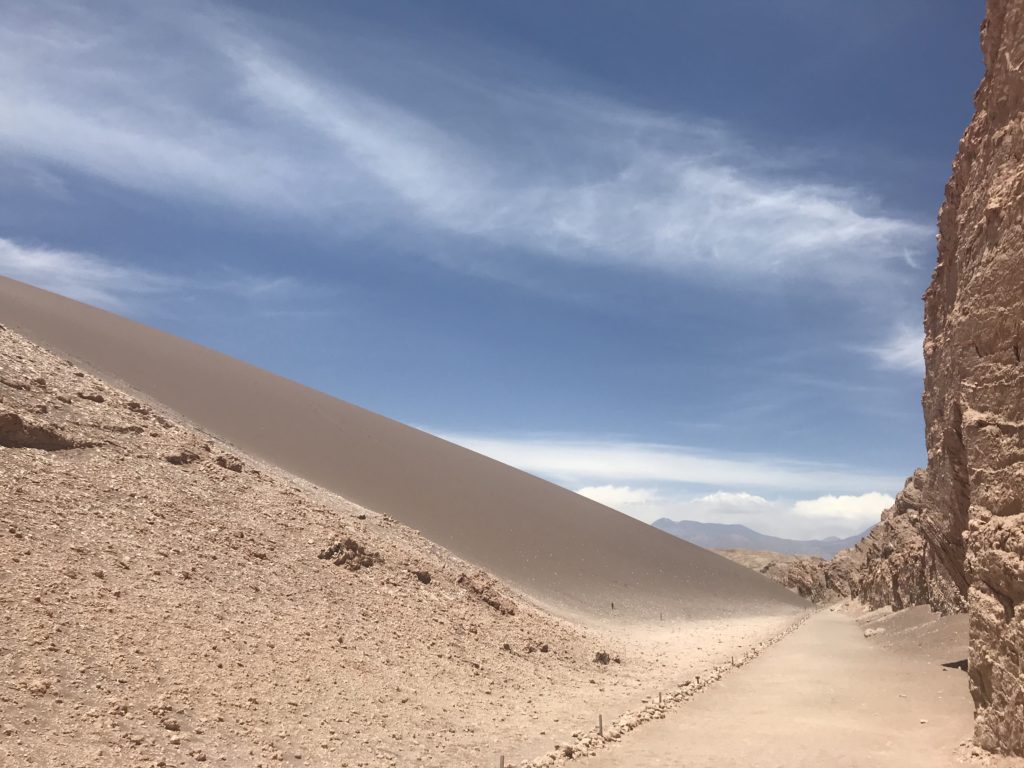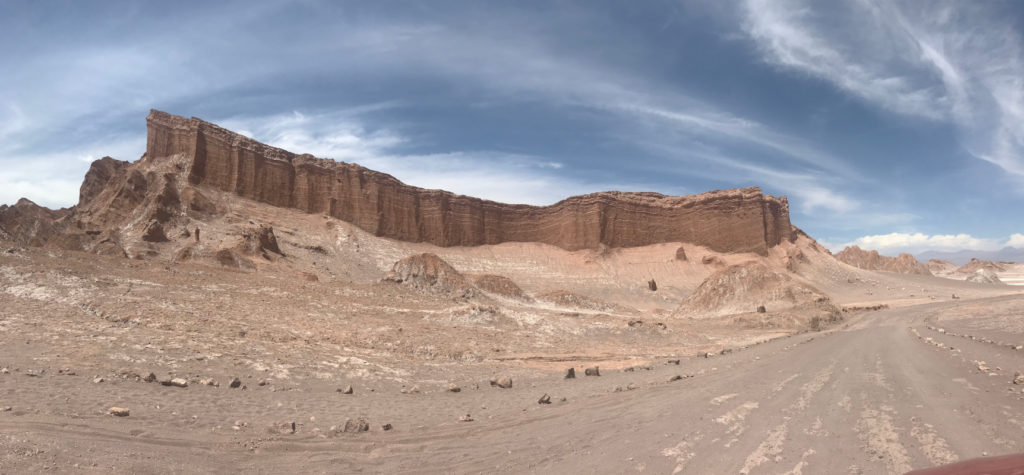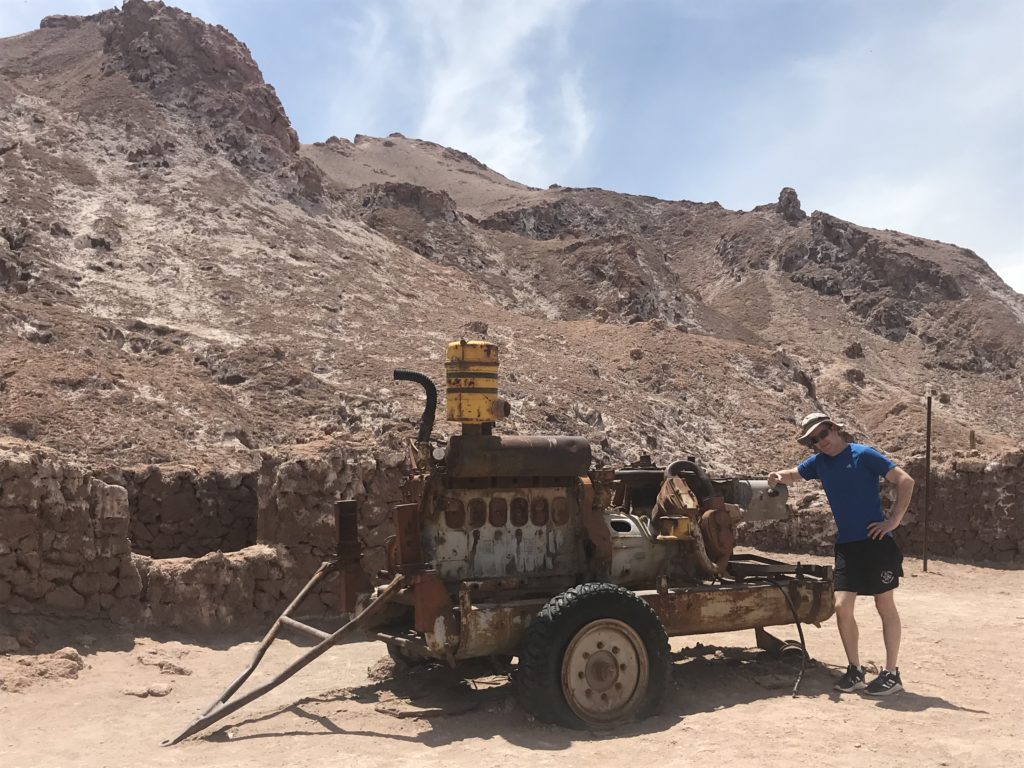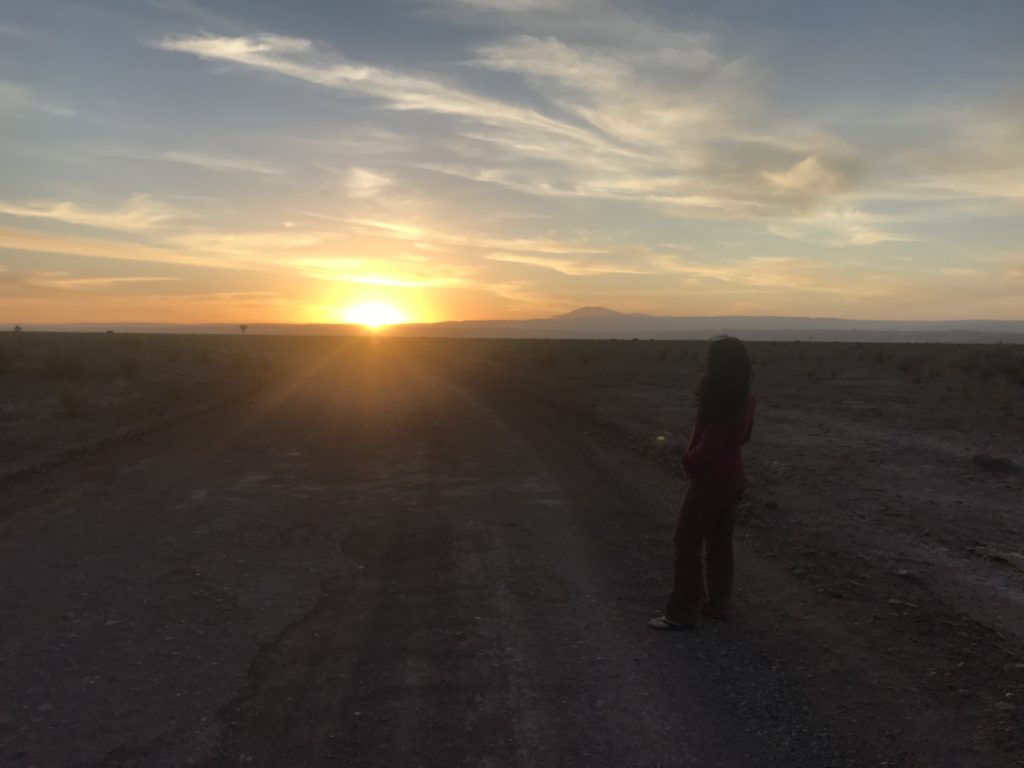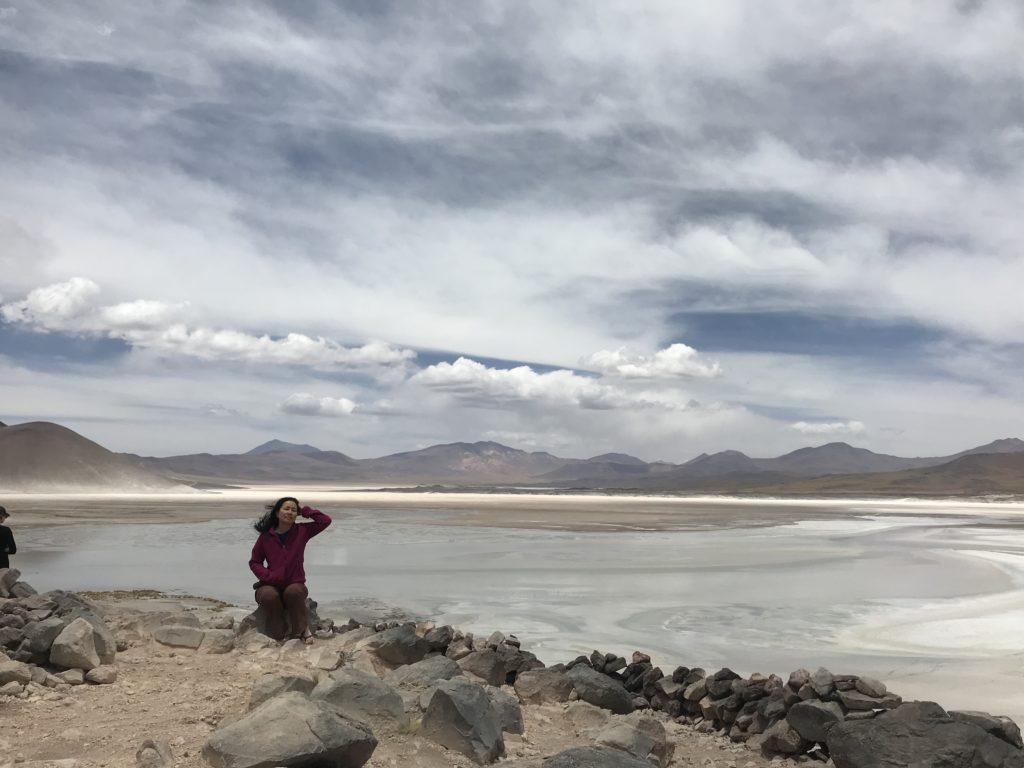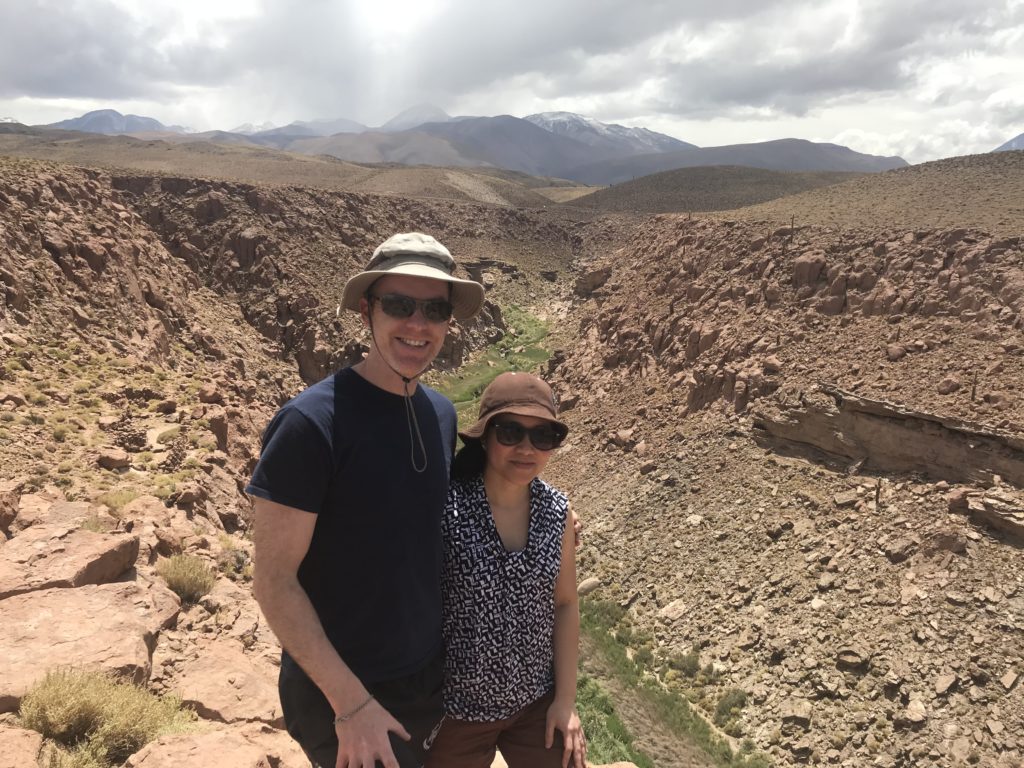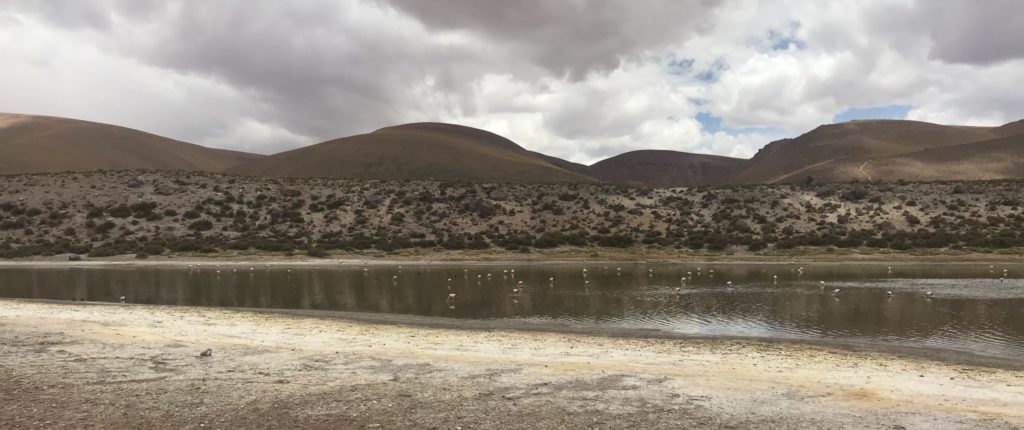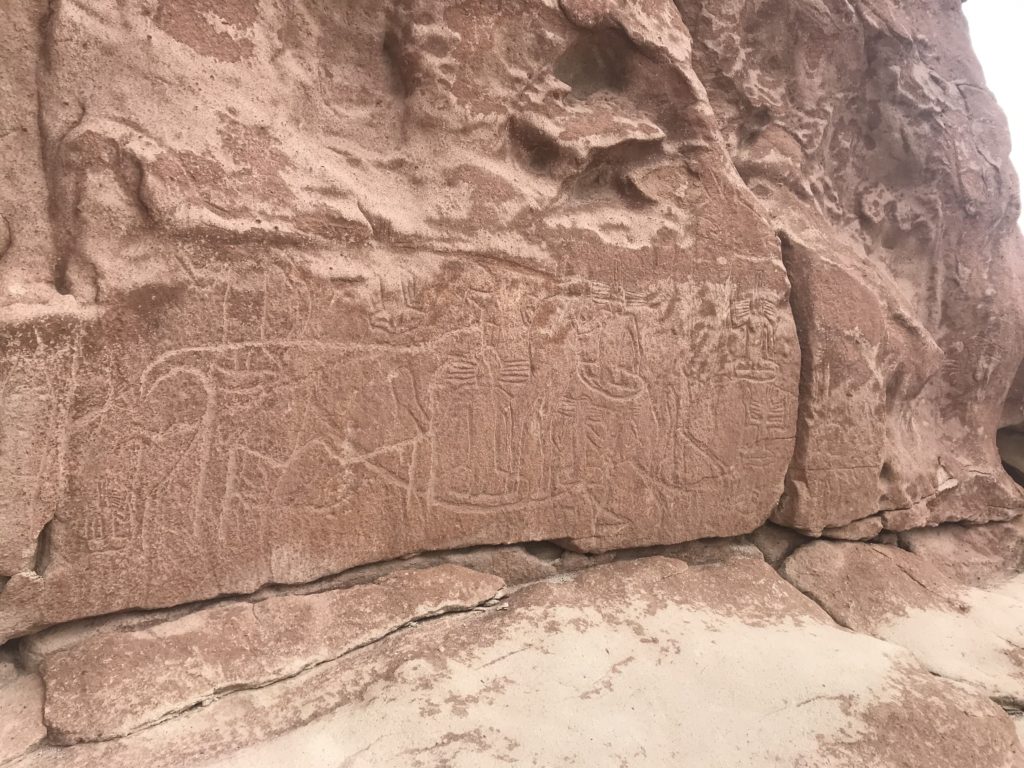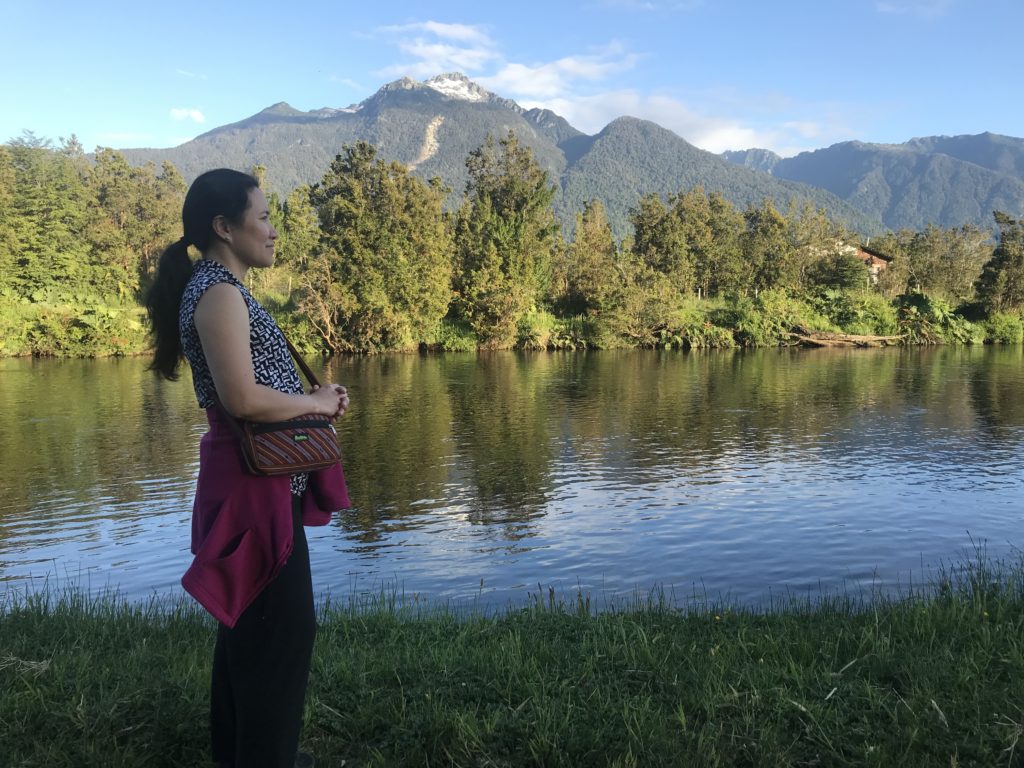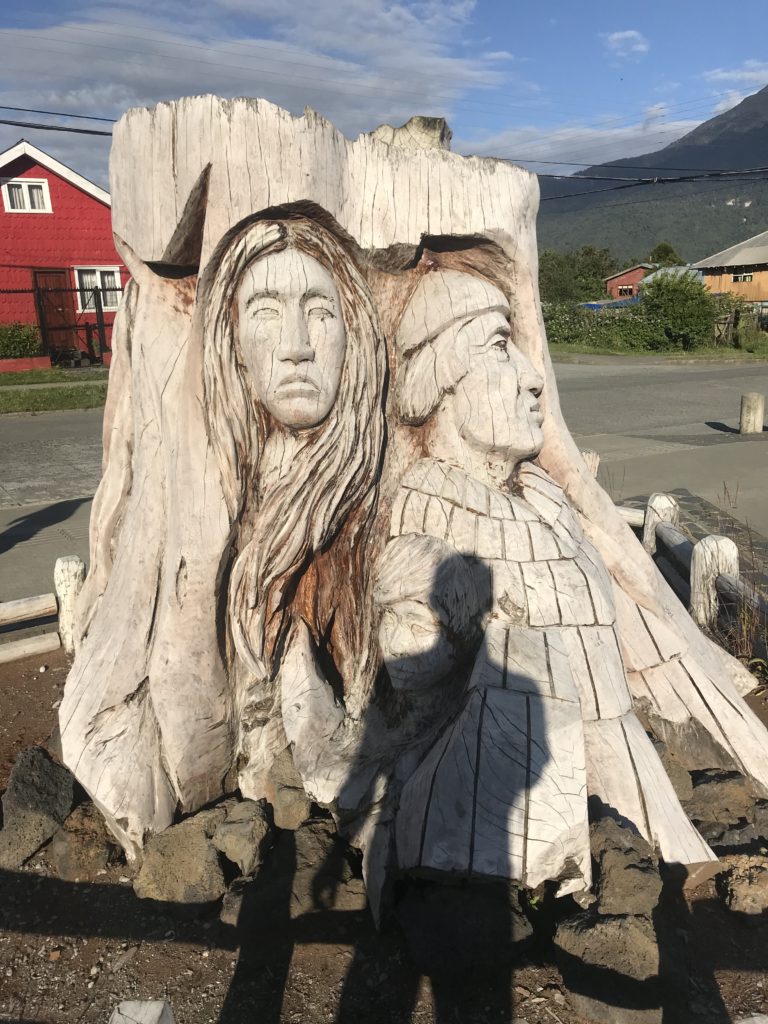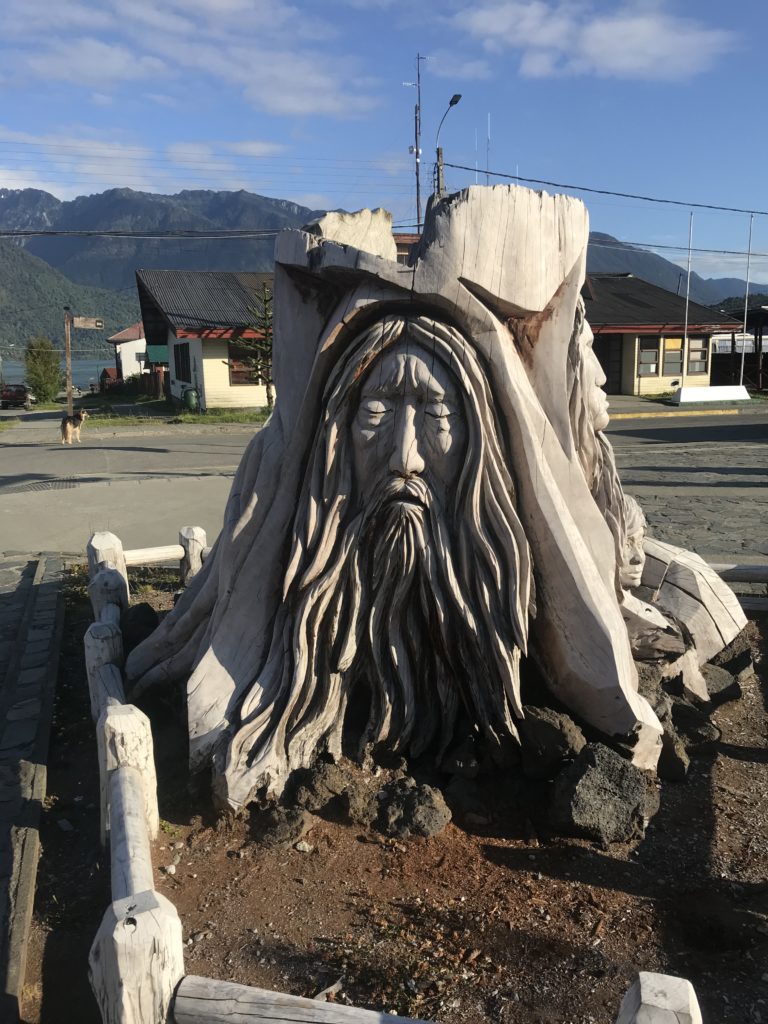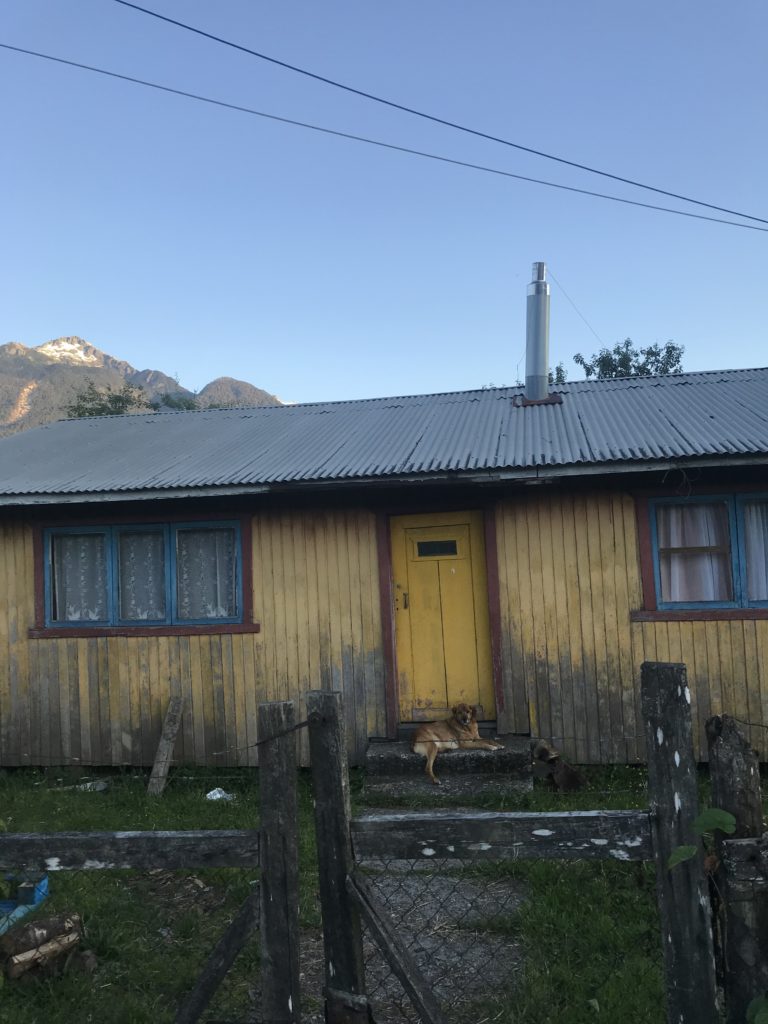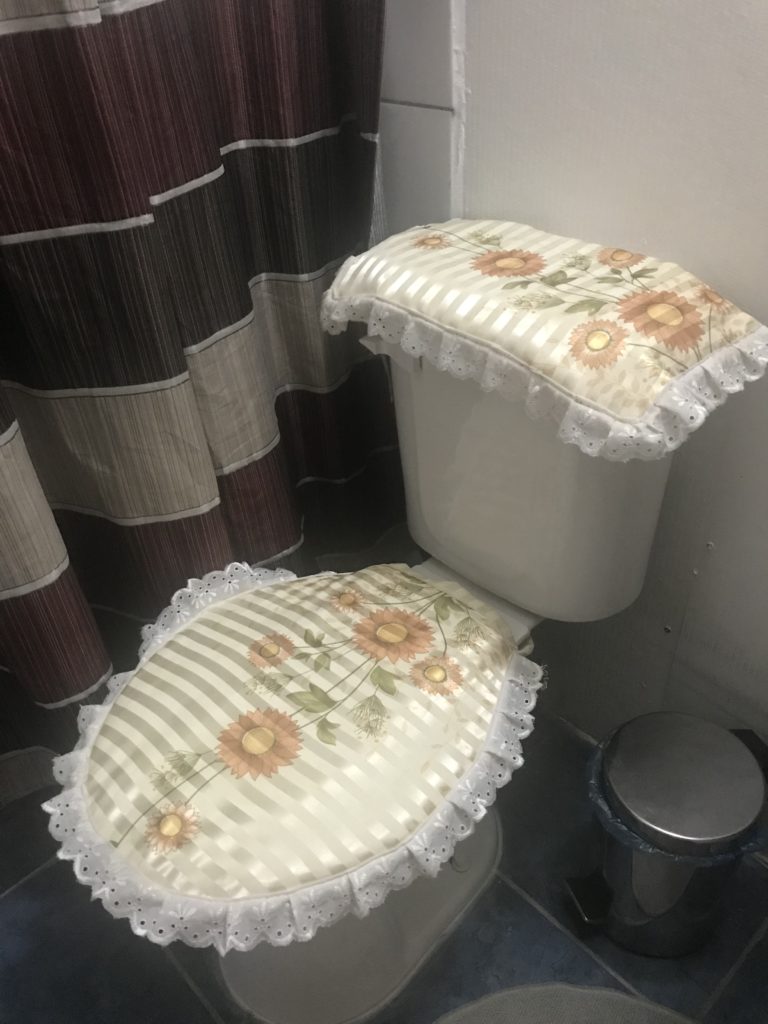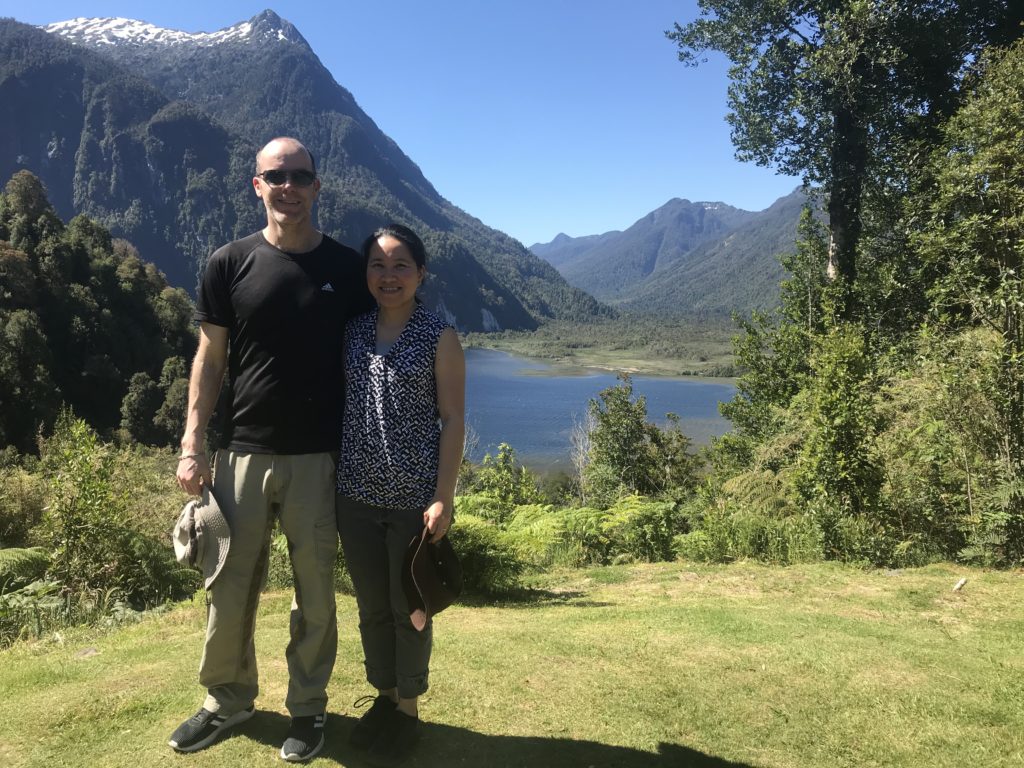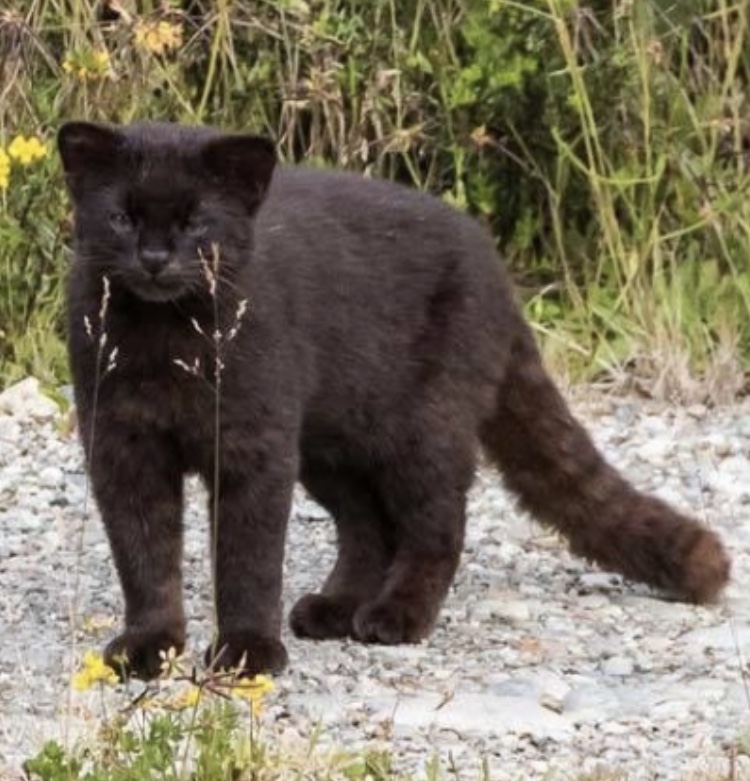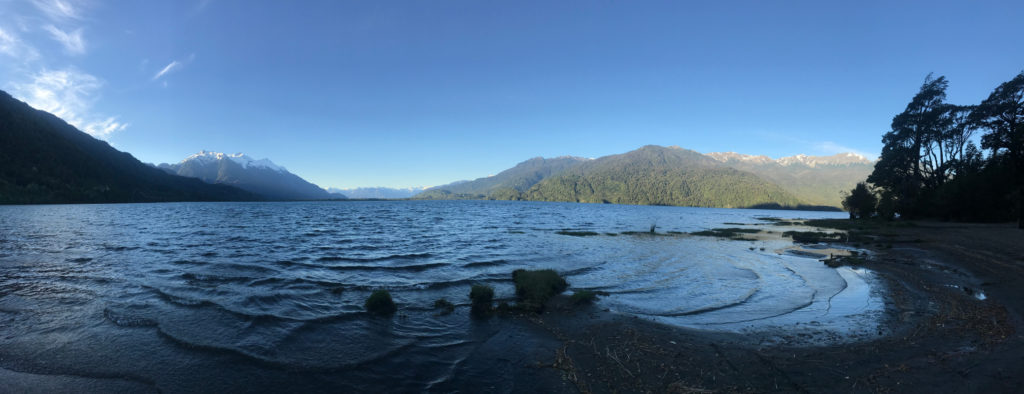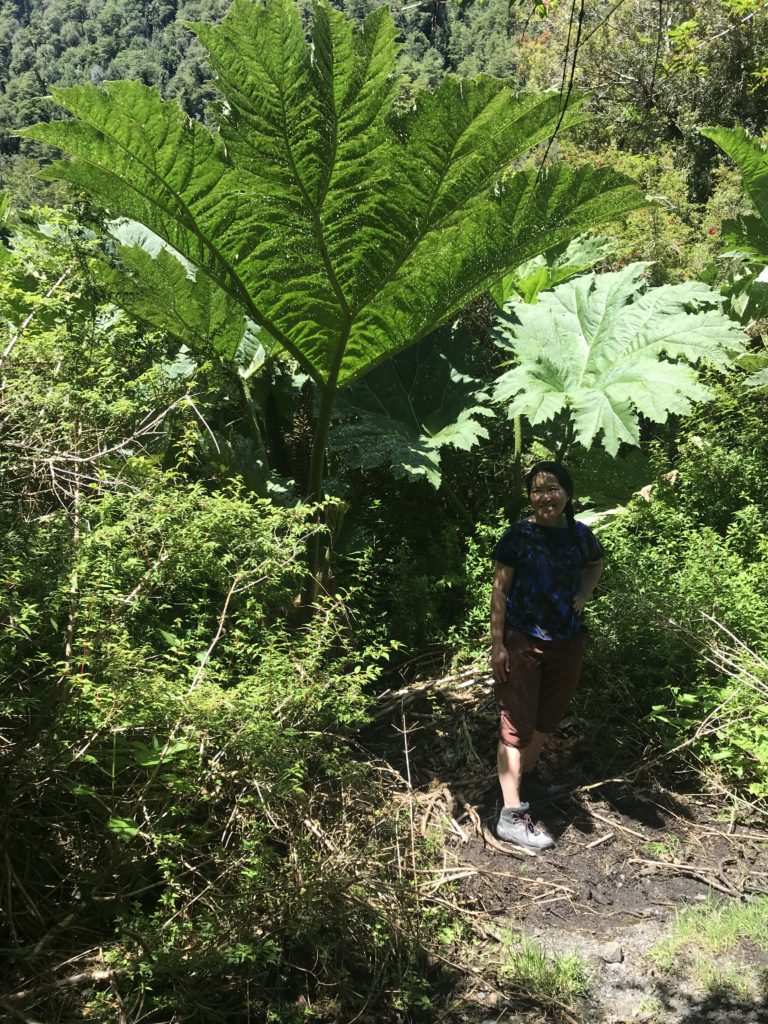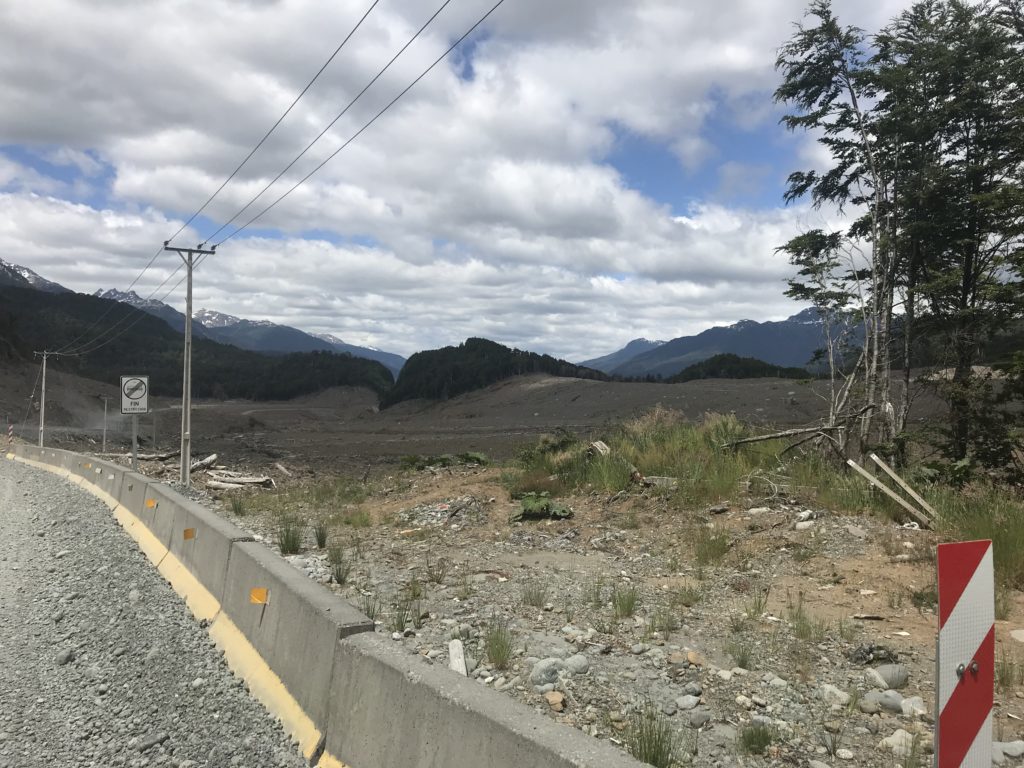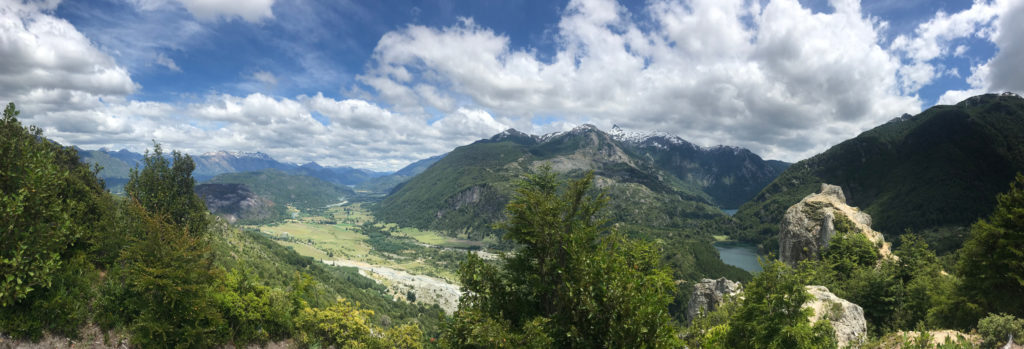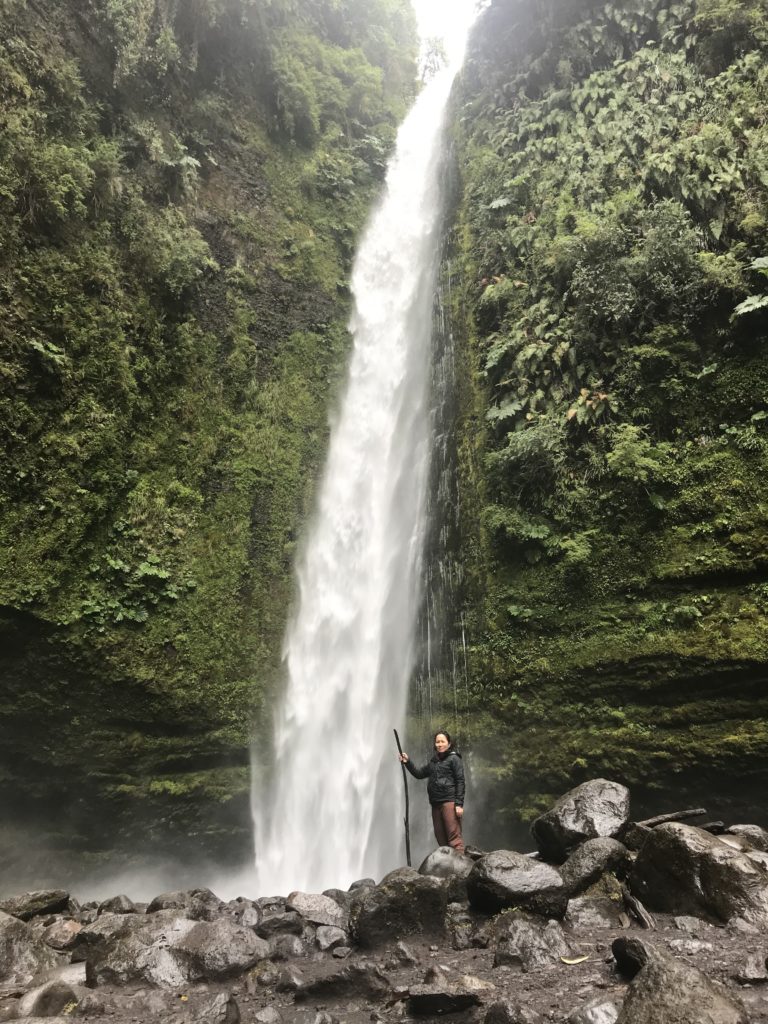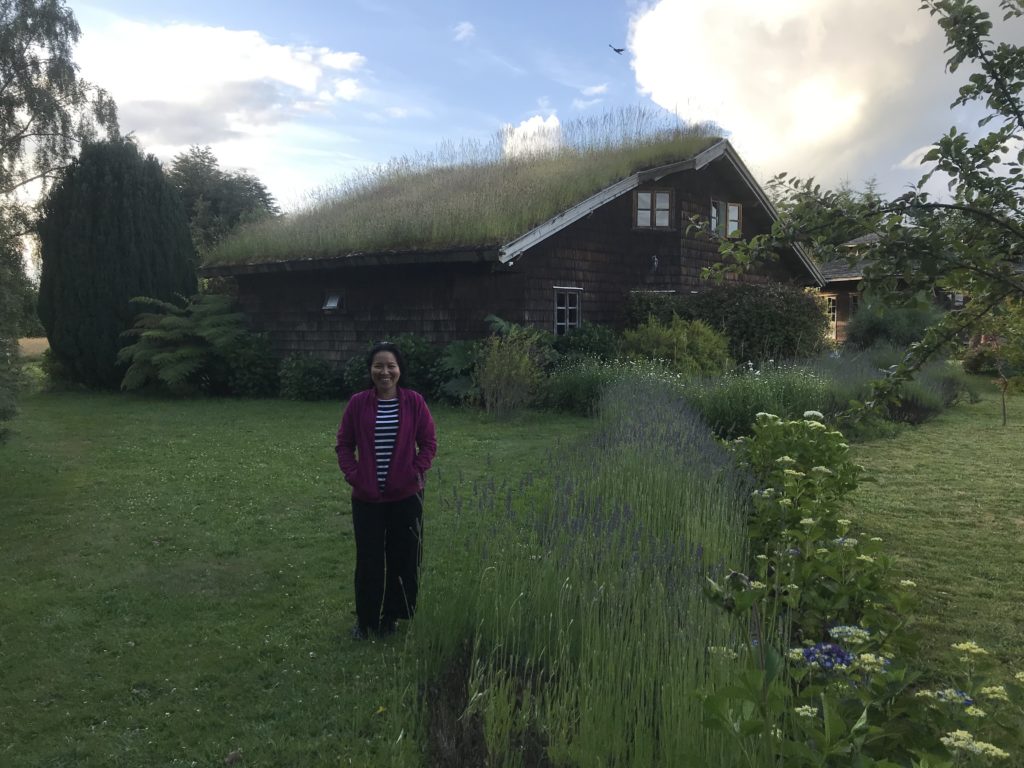May 3, 2002
Allow me to create the scene: a divine mixture of wicked good Boston accents, British vocal stylings and illogically delicious and fresh pint of Sam Adams – the likes of which, as I told the bartender, I have not witnessed since a high level keg party. Where else would this be but an airport bar next to a British Airway gate in Boston’s Logan international terminal. It was a fine beginning to a two-week sojourn in Europe that would expose me to Switzerland and Sweden. These geographical choices are the product of months of research, interviews, lab reports, fistfights, studying…not really. To be honest for a moment, they were selected because my former roommate Derik and his lovely wife Mary Ann are living in Zurich, Switzerland and some special friends known as the Fransens reside in Höör, Sweden. It should be noted that at one time, the Fransens used to play golf with Frieda of ABBA so please remain in a state of soft and dreamy awe as you read about them.
I boarded the large and what appeared to be recently built British Ariways 747 that would take me to London and then on to Switzerland.
May 4, 2002
I headed to Zurich and once in the airport, I searched around and finally found my good friends, current hosts, and Switzerland’s favorite expatriate married couple: Derik and Mary Ann. Hugs and kisses were the immediate order of the moment although somehow I found the strength to resist such forward acts of affection with Derik and settled for a much safer and masculine handshake.
We enjoyed Zurich’s finest in public transportation back to their apartment where I began to notice a dominating force of cleanliness and neatness around me. Yes, the city’s personality was becoming known to me slowly like the revealing of the romantic, passionate and mysterious secrets of a beautiful and perfectly engineered video game. I entered their apartment and enjoyed its simple yet spacious nature. The modern furniture in the family room warned me of its ability to double as the set of a George Michael music video so I sat in one of the chairs with caution and respect. Derik, Mary Ann and I chatted for some time which resulted in a nap, a nap caused by jetlag or boring conversation…we’ll never know.
The three of us again boarded a train or tram as they call it and made our way into the city where we involved ourselves in Italian cuisine. The conversation continued to follow us after the meal as we walked by the river and eventually to an interesting Moroccan bar by the name of Pur Pur. I did not realize this was name of the bar when I entered this mellow funky lounging atmosphere. When I saw these little glossy pieces of paper everywhere that said “Pur Pur” on them, I thought they were small advertisements for one that holds the position that the Swiss seem to have an affinity for: disc jockey. I couldn’t understand what the ad read but I imagined it was something like: “DJ Pur Pur will melt in your mouth like our country’s beloved chocolate as he creams you with special and 100% hit-ridden love sounds. Party! Enjoy the night and be healed by special DJ Pur Pur.”
As welcome as the discovery of an all day, five-dollar breakfast buffet, so was the meeting of our precious waitress Sandra. It was my first day in Zurich and her first day of employment at DJ Pur Pur’s eating and drinking saloon. As my Swiss German was rusty and non-existent, I delighted in the fact that Sandra was programmed to efficiently communicate in English. She was extremely lovely in her appearance, demeanor and conversation abilities. By the end of my Pur Pur experience, I found myself desperately giving her my email address in case she ever decided to travel to Boston.
After talking with Derik and Mary Ann and seeing it firsthand myself, a certain Swiss trait became clear to me. It can best be described as non-multitasking. You can be standing next to someone (let’s say a waitress) and trying to ask her for something (let’s call that a menu) and you won’t get the time of day until that person is completely finished with their current task at hand. You can use your most powerful, non-verbal body language and you still won’t get anywhere. You could be a gunshot victim bleeding to death and a Swiss nurse won’t tend to your lethal injuries until the grass she or he is watching grow has reached an acceptable height.
We moved on to another club called Andorra to meet up with Derik and Mary Ann’s friends. Three things I adored here: the jazz playing on the sound system, the Belgian beer Maredsous on tap and an airplane propeller that rotated from the ceiling. Sufficiently content with all of this, we returned to the apartment where I quickly jotted down some things of note from the day. While I did this, Mary Ann came in and said with a little sister smile, “Make sure you put something in there about how much of a beautiful and gracious hostess I am.” Mary Ann, you’ve taken the words from my mouth.
May 5, 2002
After waking, I enjoyed some pleasant conversation and breakfast in the kitchen with Mary Ann. It was then and there that I decided to go for a seven-mile run through Zurich so I did so along the river and Lake Zurich. While running through the lake, I paused for a moment to stare at this large metal, rusty structure that did its best to represent modern art. It was raised 12 feet in the air and contained many metal wheels. If you squinted at it, it looked like some cartoonish train so I lovingly named this piece “Mein Choo Choo”.
Upon my return, the three of us found ourselves heading to the town of Schaffhausen to view the mystical Rhine Falls. We stepped off the train and onto the bus that led us to this mighty spectacle of nature and gravity. We descended down the hill and came face to face with an aquatic disappointment of the 17 Swiss Franc nature. They resembled a hiccup in an North American white water rafting experience but the tourism literature we read built them up to something else that could only be approached by “Daredevil Boats”. Mary Ann half-heartedly tried to defend this meager attraction and Derik and I laughed our asses off as these “Daredevil Boats” gently bounced near the falling water amidst a danger that more closely resembled that of a boy peeing near his rubber ducky in the bathtub. Maybe it’s because I’m from the US. I don’t know but if something is natural and going to catch my attention, it’s got be bigger than my head.
Undaunted, we carried on to a small village by the name of Stein on Rheim. This beautiful, well-preserved medieval treasure was located on the Rhine River. We strolled carelessly through tight, perfect streets that felt more like corridors. We then ate a meal. How was the meal? Let’s just say that the high point of the meal was the fact that half of our table was in a bay window. No one else was in the restaurant so everything occurring was easily audible. Shortly after we ordered, the electronic beeping of a microwave keypad was heard followed by the trusty whirring noise. A final beep tone was heard and moments after, our food arrived. It’s like they were reading my mind, somehow figuring out that after traveling thousands of miles to Europe, all I really wanted was a meal cooked in a microwave.
Visually stimulated and fed, we took the train back to Zurich and began to discuss some funny Swiss nuances. One that came up was an observation I made the first day I landed in Zurich. This is the bizarre yet semi-popular trend of women dying their hair red or at least putting in some serious highlights. It approached the following level of insanity: imagine if all the women of the USA who add blonde highlights to their hair changed their minds and replaced their current highlights with a strong red dye. Some are subtle and some look like an extra in a Fire Marshall Bill sketch.
We then entered the apartment, we watched Rocky IV in French and went to bed.
May 6, 2002
This morning I woke up and ate some European breakfast of champions type cereal and I believe an egg also found its way into my being. Derik was already at work so Mary Ann and I headed to their gym. After one of my beloved vacation workouts, I illegally boarded a train to Uetliberg. Time was running short, I didn’t have the right bills for the ticket machine and I wasted precious minutes waiting in a post office line that I mistook for a ticket line. The Swiss public transportation model relies on the honor system. There’s only about a 10% chance (depending on the mode of transportation) that you will be asked to show your ticket. So with the ugly boldness of a Liza Manelli wedding, I jumped on the train and ascended the 800-meter hill/mountain that delivered some beautiful views of Zurich and the surrounding area.
After talking with a woman behind a tourist information window, I decided to run the six kilometers along a rolling path that traveled along the ridge of the mountain and through majestic fields of flowers and bright green grass. My plan was to run six kilometers, board a cable car that took me to another train station and travel home without using my own leg power.
The six kilometers was a bit challenging. The altitude was a bit higher than I’m used to and there were hills to contend with, leaving me worn out. I was not crushed but I was more than content to have performed these six kilometers and left it at that. But as a commander who has never held a gun lackadaisically sends his troops out to battle, so was the soft creature behind the tourist information window that told me to make my way to the cable car station. For when I got there, I found that the cable car was not running due to maintenance being performed on that day only. I stared at the sign that told me this and then the small station in silence. In silence because I knew no Swiss German curse words. What use would it serve if I swore at this non-operational cable car station in English? Where would that have gotten me?
So I turned around and ran all the way back to Uetliberg. I heard a train whistling as I drew near the station so with no time to spare, I once more mocked the Swiss public transportation honor system model. It felt naughty. It felt nice.
I stepped into the apartment and encountered an almost concerned Mary Ann and a curious Derik. I shared my adventures with them and ate half of their food supply. Mary Ann then left for work and Derik and I walked around the city. This gave me a chance to tend to the currently untended task of securing and smoking a Cuban cigar. I made it more so than any Number One I have met in a long time as we strolled through the old part of the city. We discussed much: our distaste with pants, our common dreams of becoming writers and Derik’s recent novel, “Where the Dark One Sleeps” that was published not long ago.
We ended up at a café on one of the main streets near the river where we tried to make sense of women via our personal experiences. Inwardly alluding to the pathetically drowning nature of this topic, we finished our drinks and watched the sun set from the Grossmunster. We then walked to Mary Ann’s place of work, made it back to the apartment and feasted upon chicken fajitas.
May 7, 2002
After Derik went to work, Mary Ann was gracious enough to assist in my adventure making. We decided to explore Schloss Kyburg which is a castle located in the small village of Kyburg. Kyburg is just about 17 km outside of Zurich. When we stepped off the bus, to our delight we found ourselves knee-deep in tiny, quaint, European village stuff. Not two minutes passed until we had a black and white cat following us through the village. I named our new friend “WC” which affectionately stands for “Water Closet”; the British and European way of saying “bathroom”. This favored feline received this name since we were looking for a bathroom at the time we met him and saw the “WC” sign. I’ll be sure to keep away from the same and other less desirable public institutions when I’m naming my children.
Mary Ann and I entered the courtyard of the castle and entered the first room. As we did, WC ran in before us and into an exhibit. We laughed and as we watched WC get Superbad, I said, “You just made the journal, pal!” I don’t remember too much about the castle except that it was old and built for small people. What did impress me was the lovely café that hosted our lunch and accompanying beers. The sun was out and the temperature was around 65 degrees. We both ordered the Fitness Salat (salad) which made us giggle as we ordered it. Unfortunately, they were fresh out of the Bench Press sandwich, the 100-Meter Dash salmon and the Clean and Jerk Potatoes.
With this, we took the bus and then the train back to Zurich where Mary Ann went to work and I headed to a track to perform a workout. Yes, a workout. Everyone thinks it’s so damn weird that I do this on vacation and they’re right. But please understand that I am smack dab in the middle of the spring/summer track season and I am 1.5 seconds away from breaking the 2:00 minute barrier in the 800m. So in case you were interested, I did five 800m intervals at about 2:28 pace. And the really crazy thing was that the track was 250 meters instead of the standard 200-meter indoor or 400-meter outdoor tracks we find in the states (I’m guessing because four laps brings you to a kilometer while four laps of our 400-meter track brings you to a mile).
I then ran back to the apartment, showered and waited for my friend Derik. The two of us headed to Mary Ann’s work and then to a fabulous Thai restaurant. We all enjoyed the green curry chicken over white rice dish. I delivered such an appetite-filled punishment on my large meal that it bordered unkind. I was pleased with the edible encounter but I still needed more. We took care of dessert at the Gran Café where I barely managed to communicate with our waitress on the topic of Queen. She previously made no attempt to talk with me but when she heard me talking to Derik and Mary Ann about the song “It’s a Kind of Magic”, she added, “I like this song. It was one of his last.”
“Yes” I replied, “Freddie Mercury was special.” I couldn’t help but reflect on Freddie’s amazing, beyond-the-grave ability to create a conversational space where people of many different tongues could effortlessly enjoy moments with each other. Time for bed.
May 8, 2002
It was Wednesday. Today I left for Sweden. I said my goodbye to Derik over the phone and proceeded to do some pushups, as I knew it may be the last time I would have the chance to do pushups on Swiss soil. I gathered my things, showered and left. Mary Ann was kind enough to go with me to the train station. Once there we said our good-byes and I soon found myself flying to Copenhagen. When I told Derik I was next going to Sweden but flying into Copenhagen, he said, “Chris, I hate to be the one to tell you this but Copenhagen isn’t in Sweden.” So to all my lovelies out there casting shadows on my ability to fly right, please not that Denmark and Sweden are connected by an eight-kilometer bridge.
I then landed and bought some gifts for the Fransens. I acquired an excellent bottle of Scotch for C.B. (the father), a nice bottle of red wine for Margaretha (the mother) and what I thought was a brilliant bottle of perfume for Pernilla (the daughter). With that, I boarded a train that was to take me over the bridge and into Sweden. During the second half of the trip, three natives sat down next to me. Soon I was talking with Stephen, Patric and a woman whose name was harder to understand than Bob Dylan’s singing. The best compliment I can pay these people is that they had the stunning ability to bring several bottles of beer on a train, drink them, and not look like white trash. My stop came. I said farewell to my new friends and told Patric to call me in Boston if he ever visited his sister there.
When I stepped off the train, I experienced something that most American men (and other sane men of the world) would be envious of. There waiting for me at the train station was a Swedish woman that knew my name. I had not seen Pernilla in over three years. The last time was in France when my friend Matt and I traveled to Ireland, Paris, and Belgium. Her hair was a bit different but her quiet, intense charm remained.
As we drove home, I began to recall similar drives when I used to visit the Fransens in a small village outside of Paris by the name of St. Leger. Their house was a quaint and cozy cottage-styled arrangement that made its visitors forget the outside world. When we pulled into the long, dirt drive way, I could already the same vibe. This authentic Swedish cottage was complete with a straw roof and red wooden beams that broke up the stone and white stucco walls. In the back was a garden that was obviously extremely diverse and well tended to. The car stopped and the couple was waiting for me at the front door. It was one of those half doors that allows you to stand in your front door, look around, soak up the fresh air, greet neighbors…all while not wearing pants. It’s ingenious. After embracing and greeting each other, I was lead through this unbelievably cozy and intimate environment that boasted of unfinished wood floors, exposed wood ceilings, exposed wood beams in the walls and an array of old relaxing antiques. I felt I was in a dream.
With the three of us in the kitchen, I began to pass out the gifts. To C.B. I gave the disturbingly decadent bottle of scotch. Margaretha received the red wine and and many packs of Reese’s Peanut Butter Cups. I gave Pernilla a large bottle of Jergens lotion (there’s a good explanation for that) and a bottle of Hugo perfume. They were all happy so we moved on. A few hours later, I turned to Pernilla and asked, “How do you like the perfume?”
“Oh, actually it’s underarm deodorant, not perfume.”
I stared at her and asked, “Are you joking?”
“No.”
The short of it is that in my haste, I quickly grabbed a small box that was behind a perfume sample, wildly thinking: The box behind the perfume sample contains perfume as well.
I then slapped my head, apologized, and savored that “I am less intelligent than a farmyard turd” feeling. How insulting can you be to a pretty young lady? “Hey smelly, your stench offends me. Here’s some deodorant.” To her credit, Pernilla convinced me she liked the gift but I still struggled with the mishap and told her I don’t normally give deodorant as gifts to special people.
I did my best to shrug off the awkwardness and soon was drinking a Carlsberg out of the same glass I always drink beer from when I stayed at their house in France. Moments later, the four of us were all eating a delicious, home-made Thai dish. We spent the next several hours catching up and enjoying the precious social inebriation caused by the evening in its entirety.
May 9, 2002
I somehow slept through the sounds of the Fransen’s feisty rooster that resided with a goose in their barn. I prepared a simple breakfast for myself and took part in a long and satisfying talk with Pernilla. During this time, she drew me a small map of the immediate area that would hopefully keep me from getting lost on my seven-mile run I planned. It was quite cute. She was like some sweet cartographer-crazy mother.
I thanked her and began my run that led me through beautiful fields and by the edge of a glorious lake. Everywhere I went, there were were the sweet and powerful smells of spring. I was officially blown away. The sun’s presence was prevalent.
I passed by fields of horses and flowers and eventually back to the 20-acre piece of heavenly land that surrounded the Fransen’s home. The air was fresh, you could smell the earth, the sun was shining and the sounds were peaceful.
The four of us gathered for a well-constructed salad. I then showered and went with C.B. And Pernilla to C.B.’s place of work where I had the chance to take an up close look at his composting machine that he helped design and is now trying to market with the help of some large firms. We were in the small laboratory part of his office space where he performed numerous tests on his composting products. He was like some mad, brilliant, evil scientist without the evil part.
While Dr. Compost made it so with his brilliant dirt, Pernilla grabbed a stethoscope from the wall and listened to her heartbeat. She could not hear her heartbeat so I listened to it and then my own. What we discovered on the young lady was a very quick heartbeat. She made a funny face and searched for an explanation. With calm, American reassurance, I put her fears to rest and told her that in my presence, many women experience an accelerated heart rate. It was quite normal. She was merely excited to be in the same room as I am. She glanced at me with a serious expression that contained about only 1% of humor and said with her Swedish/French accent, “I don’t think that is the case.” Damn it.
And what the hell was a stethoscope doing in a compost laboratory?
C.B. Finished his duties and we drove back home. He then continued work on his golf course and Pernilla and I took the dog for a walk through fields and forest located on their property. The manner of this walk was innocent although I could not help but feel I was in some sort of sappy Danielle Steele romance novel. Again, the scenery and smells demanded my attention. None of it felt real; not even the pile of rocks that was located on the edge of their land that had been used to build the 12th century cathedral in the nearby city of Lund.
A couple hours later we sat down to eat Tandori chicken and rice. Dessert was ice cream, these weird tube-shaped wafers filled with an almond paste, this bizarre jam made from berries only found in the tundra and lovely conversation. Moments later I was smoking a Cuban cigar and helping C.B. with his 15-year old scotch I had gifted him with. Unlike me, the scotch had aged in oak caskets that previously held Spanish sherry. I have no more to add to this perfect day except thank you God.
May 10, 2002
After the normal morning routine, Pernilla and I decided to journey to Copenhagen. Before we left, I lightly punished myself with a pseudo-track workout in the fields outside of their house. Let it be known that I was actually sprinting in the fairway of C.B.’s par five golf hole. Cleaned up and “Doug E.” fresh, we started south to our destination. On the train, Pernilla and I came face to face with Dusty Mustache Man. He was a gentle creature and said little. He was probably in his 20’s but his ninth-grade lip curtain betrayed him relentlessly. Dusty’s body looked like a piece of candy and his favorite pastime appeared to be fidgeting. But the one thing that caused Pernilla to fight back her laughter was Dusty’s constant caressing of his fragile porcelain mustache as if it were a pet. He had much love for those few precious hairs. It looked possible that at some point in his life he may acquire a true, Burt Reynolds, members-only mustache but for now, he was obligated to content himself with the small executive board meeting of Stache Inc. that was taking place right under his nose.
The train stopped and we began our tour of the city. Copenhagen was absolutely packed on this gorgeous Friday. Instead of parking lots filled with cars, there were large spaces crammed with more bicycles than Levis 501 jeans at a 1980’s rodeo. We found it difficult at times to navigate through the thick sticky masses. We walked down the main shopping street and ended up at a canal that led to the harbor. I don’t know if the city was always like this or if it was because of the previous day’s holiday but their were people drinking all along the canal’s edge. People were sitting everywhere, drinking and enjoying the sun.
Two young men dressed in nothing but black shorts saw it it fit to jump of the 15-foot ledge and into the dark, mysterious chilling waters below. They were part of a bigger group of other gents that wore no shirts and had some sort of symbol written on their shoulders. One of them had a huge and ridiculous Elvis wig on his head. He seemed to be the ringleader or commander. They enjoyed their beers and as they walked, they were constantly yelling and shouting in unison. The atmosphere in the city that day struck me as some large-scale organized high school party. I did my part by grabbing a beer and so the two of us walked carelessly through the city.
On the train home, we confronted yet another tricky mustache situation. This one I called the Hitler Negative with Accompanying Handlebars. Where Hitler had his mustache was shaved on this youth and where Hitler’s mustache ended began two patches of hair that had two toothpick-sized rods of hair that stuck out like TV antennas. It was quite clear that Hitler Negative was fond of his creation. Perhaps more so than Dusty Mustache Man. Perhaps they knew each other. Maybe they are two superheroes that form a duo like Batman and Robin and for the moment are on break as they take the train to the Hall of Mustache Injustice.
Back at the crib, we relaxed and ate hamburgers while savoring Swedish television programming. The show we watched had people trying to look and sing like well-known performers. There were then five finalists voted to an important stature by the audience. My favorite was a well-executed Bon Scott and ACDC rendition of Highway to Hell. He made it to the finals but placed third overall. The winner was some candy-ass, dough boy that, I am told, did a knockout impersonation of some dead and boring singer.
May 11, 2002
The morning was so meteorologically special that C.B., Pernilla and I ate outside on a stone table in their garden. As they finished their food and their reading, I continued on and wrote and lingered like a professional odor. The three of us then went to town to perform some errands, one of which was a stop at the liquor store that was, by American standards, strange. Before entering, C.B. told me that the government operates liquor stores in Sweden. C.B. led the way. Once inside, you had to take a number. Samples of all the various kinds of alcohol were behind a glass case with an identifying number and respective price below. Once your number was called, you proceeded to a register where you placed your order. It seems like no matter where you are in the world, once the government gets a hold of any type of establishment, they turn it into a registry of motor vehicles.
The people working there were nice but the whole experience was like being on a blind date. I wish to get to know and maybe touch and smell my potential purchase as I do in the US. Here, the process feels like, “You should meet this girl. My cousin’s dentist who is a 52-year old married woman thinks this girl may be attractive. I think she was on the golf team in high school and did archery in college so she’s most likely quite fit but who knows?”
We returned home for a while and C.B. offered to show me one of Hoor’s castles. This particular castle was owned by a count. I never really knew what a count was so for those of you that don’t either, a count is someone that is part of an aristocratic family that can date their family name back centuries. I like to think of them as a class of useless royalty. All of their current worth rests solely on the fact that one of their relatives long ago stabbed someone important at a crucial moment. Unless you’re out there making good cereal like Count Chocula, I’m not convinced the world has a need for counts.
The wacky thing about this count is that he didn’t have the money to buy and maintain his castle on his own so he opened the majority of it to the public, put up some exhibits, and charged them a fee. You are free to roam around his yard as well. Basically, this guy lives in a museum open to the public so that he can continue to embody his count role and brag to his friends about the sweet castle he lives in. That’s like me living in a tepee in Times Square, claiming the square belongs to me and charging people to walk through it.
In any case, the castle was nice to look at and the grounds around it along with the view of the lake were stunning. Nearby, there was also a 1000-year old oak tree that threatened to be larger than the Rhine Falls in Switzerland. Bordering the castle grounds was a shop that sold crafts and the like. I bought a few things and began to speak with the husband and wife that owned the shop and doubled as friends of the Fransens. The woman’s name was Lisbeth Ransjo-Shirley and she was the primary force that started the needlepoint movement in the 70’s. At that time she was known as Lisbeth Perrone and wrote several books on needlepoint in addition to other crafts. I’m not quite sure I am turned on by needlepoint but I respected Lisbeth for her dominance of the field.
One of the great things about the friendship C.B. maintains with these people is that once we were done speaking with them, it allowed us to sneak onto the grounds free of charge through the shop. It pleased us both to stick it to the count.
Relishing in our modest affront on quasi-royalty, the two of us left the castle. An hour or so later, C.B., Margaretha and I visited the local plant nursery to buy some items for their garden. The Fransens (the real Swedish royalty in my estimation) were also friends of the husband-wife team that owned this business. At this nursery, its patrons could not only enjoy a diverse collection of plants and flowers, but they could also savor baked goods, coffee, and tea. Moments later, who rolled in but the count and his mama, both in search for sweet cakes and caffeinated liquids. As I walked around this place, I passed by the count and tried to say hello to gauge his reaction but as I was a silly American dressed in running clothes, he had little to no use for me.
When I returned, I cleansed myself and left with Pernilla to dine in the Swedish coastal city of Malmo that is a mere five miles, I mean eight kilometers, from Denmark. On the way, we picked up her friend Andrea who was as charming as the evening the three of us spent together. We ate in a plaza teeming with restaurants. Ours was Mello Yello and proved to be of far greater quality than its American soda’s namesake.
May 12, 2002
I awoke and enjoyed freshly squeezed orange juice produced by a combination of Mother Nature and C.B.. Afterwards I ran into town to execute a track workout of modest proportions (3 x 800 meters and 2 x 400 meters).
Once back, I cleaned my dirty self and ate lunch with the mighty ones. While we ate, C.B. interpreted Swedish land and property laws for my amusement. Earlier that day, some moron and his son knowingly walked through the middle of one of his fairways. C.B. was concerned that in the future, he may actually hit this little turd with a golf ball which sounds funny on paper but lends itself to an ugly reality. The law says that strangers are allowed to walk on the property of others as long as they are not seen. If they are seen, the owner has the right to force them to wear underwear made of living fire ants.
The four of us then piled into a car and drove through a good deal of the countryside to view some old castles. Some were well kept and some were a step below a Motel Six operated by Sanford and Son.
When we returned, preparations for dinner began. Pernilla prepared a rhubarb pie who’s key ingredient originated from their back yard. The rest of the meal consisted of smoked and seasoned salmon that was served with either Margaretha’s spellbinding sauce or with Pernilla’s homemade billies (some sort of Russian pancake affair). Other options included smoked eel, shrimp, and herring. The meal was deadly but perhaps more so was Pernilla’s rhubarb pie served with fresh whipped cream and vanilla ice cream. Thoughts of marriage rushed into my brain as I realized the person who made this was female and unattached. She described her creation as orgasmic. I asked everyone to leave the room. Good night.
May 13, 2002
Before breakfast, I sweat out the previous day’s toxins introduced to my body by various forms of alcohol and mini cigars with a seven-mile run through delightful forests. Once again positive odors and peaceful visuals dominated the experience.
Pernilla and I then picked up our VW Golf rental that would take us to her aunt Eva’s house located north of us on Oland. This island close to the southeast coast of Sweden measures about 90 miles long by 12 miles wide. The drive up was visually precious, allowing us to gaze upon brilliant Swedish forests and your occasional big lake. We stopped at a few glass factories since this part of Sweden is often referred to as the Kingdom of Glass. We bought a nice blue piece of glass for our hostess Eva. I call it a piece because its one of those things that could be used to hold a broad spectrum of things that include peanuts, car keys, ashes from a smoking product, useless photos received at Christmas or other comparable holiday from people you struggle to care about, cherries, and so much more.
When we arrived to the house, we drove through a large opening in what felt like a castle wall made of barn-type buildings. We parked in a grassy courtyard that was surrounded by these rustic structures. On the opposite side of the entrance stood Eva’s house. Pernilla told me that her aunt is a teacher and an artist. Her artistic talents also translated very well to her unique decorating style and ability.
Being a former painter and carpenter, I became quite nervous looking around this place. Eva’s property was quite charming but it was also an immense black hole of projects. She was converting much of the various barn space into housing for potential borders, family, and art students. A large part of this transformation was by her design. All of the different projects, like Boston’s “Big Dig” were happening at once and were scaring the shit out of me. When you have been a painter or carpenter, you can’t help but experience all the possible sorrow associated with these seemingly infinite difficult tasks. A beer and several wines later, my nerves calmed down.
The three of us chatted a bit outside which was followed by a “make a man happy” caliber meal that was prepared by Pernilla and Eva. It was satisfying and delicious. After the meal, we walked in the fields behind the house while I continued to sip on my my apple brandy digestif. Even at 10:30 p.m., one could still see hints of faded daylight in the western sky.
May 14, 2002
In the morning I ate some breakfast and then decided to give a little help to Eva. Pernilla’s main purpose on this trip was to help her aunt so I did my part by first making quick work of a shelf that begged for American-styled demolition. I then went to the second story of the barn and helped Pernilla paint a room. With my blue-collar lust satiated, I boarded by small German cruiser for a solo mission.
My first stop was the Borgholm castle. Not wanting to spend time looking at stone-based ruins and being generally too cheap to spend 50 Swedish Krona, I moved on to the village center of Borgholm. Here I ate a nice lunch on a park bench that furnished me with a wonderful view of the harbor. From there I drove to the small seaside village of Sandvik. It was here I decided to pursue a nine-mile run that brought me through fields and eventually along some seaside quarries. I figured running would be the best way to witness this unique area since Eva told me that you were not allowed to park alongside the road. Doing so would damage the very thin and fragile layer of dirt/life that exists on top of much of the limestone.
But as I write this now and remember of all of this and the warnings Eva gave me, I now think that I did more damage on foot than I would have in the car since my running rarely remained on the road and instead took me across the limestone. Oh well, I think I have some sort of Ugly American Ecological Devastation insurance policy through my job for this kind of event. I mean hey, it’s just a thin layer of rock scum, right?
I finished my run, stretched, and liquidly relieved myself behind some shack that was close enough to the road that someone with good vision may have been able to see (I had to go…no WC’s in sight and I was merely trying to restore the fragile dirt layer I may have damaged by introducing a nourishing watering treatment). The horrifying thing with aging men is their increasing disregard for outdoor peeing camouflaging. This older a man gets, the less care is taken to hiding himself. Several months ago, my brother and I were running in some conservation land when we came upon a man whizzing erratically in plain view on the edge of a trail. He tried his best to look surprised and said, “oh”. I always try to at least look like I’m attempting to hide behind a tree or signpost.
My next destination was the small fishing village of Karehamn. Here I purchased some salmon from a small store and moved onto my next sight: Kappell-uden. This spot was once a thriving commercial port but now is little more than a place with a sign and some bumps in the ground. Reaching the full level of interest this site could provide in the time it takes Gilbert Gottfried to annoy anyone, I head back to Eva’s.
When I pulled in, I found two industrious women laboring with the work ethic of a Japanese employee. Eva took to the grass with her environmentally friendly Black and Decker electric mower while I sat and wrote. About every five minutes or so, the sounds of metal slashing into a rock or stump filled the air. This was immediately followed my Swedish cries of discontent.
The three of us cleaned up (separately) and enjoyed the salmon that was properly prepared by the ladies. Eva and Pernilla found it suitable to again make my day with such a fine edible offering. My stomach was thoroughly seduced. Good night.
May 15, 2002
Today I went into the kitchen and was greeted by Eva. She began to offer me a wide selection of breakfast possibilities that spanned from the normal to the abnormal. Of the second type, Eva opened up the refrigerator and whipped out a large slab of cheese and slapped it onto the counter. “Perhaps you want some cheese” she said to me and then left the kitchen.
I stared at the cheese curiously and after thinking about the five or six types of cheese I had been eating after every dinner in the past few days, I decided cheese in the morning was to be avoided like shots of grain alcohol for the doctor in the middle of performing heart surgery (which could lead to this in the operating room: “Nurse! Did you give me grain alcohol again instead of water? Hey…why is this red thing pumping?! It’s pumping and…Goldfinger, he’s the man, the man with the Midas touch, a spider’s butt. Moonfinger beckons you into his web of gin, but don’t drink gin! Moon River…”)
When Eva returned, she looked at the untouched block of cheese and said, “Ah! All you Americans are so healthy. You don’t smoke, you don’t eat cheese, no coffee!”
I then packed a few things and decided to tour the lower half of Oland. This plan was short-lived when I inadvertently drove over the long bridge back to the mainland. Because of my navigational error, I simply decided to tour the small city of Kalmar. My first site was the Kalmar Slott (castle) and then walked through the old part of the city. During my tourist tenure, I bought two Cuban cigars (one for me and the other for C.B.) and a pair of superbad sunglasses.
As I walked down one of the streets, a small van with no driver rolled out into the street from a small residential courtyard. I stopped for a closer look in search for the cause of this but found none. A man on roller blades looked at the scene and then at me and then said something in Swedish and rollerbladed away. Then a couple of guys came out into the street, one of which was the driver. The driver began to speak with his friend and to another man leaning out from the window of the building. Even though I don’t understand a lick of Swedish, I effectively translated the conversation: “Bjorn, Stephan…I am a complete chucklehead for stupidly not engaging the parking brake or simply putting the the vehicle in any one of the other available gears that could of stopped the vehicle from rolling out into the street. My actions have created many potential hazards, one of which is scaring this sexy American tourist. I should be tortured liberally for five days by someone that hates me.”
I left Kalmar and drove to the east coast of Oland to pick up some more fish for Eva at the tiny fishing village of Blasinge. I approached a fisherman on his boat and after a difficult yet productive exchange, I walked away with a large fresh fish by the name of Torsk for $4.
After I returned, the two ladies, the two lady dogs, and I walked back into the many fields and meadows behind Eva’s house. This sojourn became overwhelmingly botanical as Pernilla and Eva saw it fit to stop every two feet to classify and pick every living thing that had color and odor and was rooted in the earth. I kept silent and wished that Homer Simpson came dashing out of the woods so I had someone to talk to. I felt like the village flower idiot as I managed to somehow step on every flower accidentally.
We walked up a wide trail with twenty or so feet between each of us. I picked up a walking stick and decided to enjoy nature. My semi-trance was broken when I heard bursts of excited Swedish shout from Eva. She dove into the woods and frantically pulled back the leaves that rested on the ground. Eva had come across a patch of edible mushrooms. I tell you now that I never in my life had seen anyone generate such positive emotion over something I don’t think twice about nailing with a lawnmower. I tried like hell to respond in kind but they saw right through me. Their revenge came when they gravely compromised my manhood by making me hold the very dainty bouquet of flowers they had collected so the two women could have their hands free while mushroom harvesting. I thought it best to stand back from the whole scene since I was made to feel more evil than Lex Luther when it was brought to my attention that I was standing on a mushroom.
The three of us cut and cleaned the mushrooms back at the house. Soon after we were enjoying the mushrooms of our labor alongside some shrimp and pasta. Good night.
May 16, 2002
This morning I met Pernilla in the kitchen. We simultaneously enjoyed breakfast and two-way communication. She went to tackle her chores and I boarded my little silver German star ship. This time I managed to avoid the bridge back to the mainland and made it to the southernmost point of Oland which would be Ottenby.
This was a beautiful place shaped like a triangle with the height and base of five kilometers. There were interesting beaches along the edges with fields littered with intermittent boulders, vegetation, and farm animals throughout the western portion of this large triangle. The eastern area was more wooded.
Being a running square, I thought it best to soak up this land at a bolder pace. For kicks, I threw in eight 75-second sprints as I went. I even managed to run through a forbidden field so I could reach the beach. It was here that I absolutely scared the living shit out of an entire herd of sheep and cows. On my way back, I ran near a pack of about eight deer that also appeared to be doing their own sprint interval training. I think they were the first creatures besides myself that I have seen running in the past two weeks.
I drove north and then cut through the middle of the island to view the strange and somewhat desolate land that was mainly more of that thin layer of life or limestone rock dirt that I disgraced the other day. Back at Eva’s, Pernilla and I cleaned up, chatted with our energetic hostess and headed back to Hoor. On our way, I was confronted with Sweden’s motorist communication system. If someone is coming up fast behind me and I am a pleasant, thoughtful driver, I will move my car a bit to the right so the other motorist may pass me more easily. If this speedier motorist is also pleasant like I am, they will express their appreciation by putting their right blinker on for a second followed by their left. And if I am feeling still notably pleasant, I will thank this motorist for their thank you by flashing my headlights. The exchange is complicated and the roadway begins to resemble some sort of laser tag disco. My advice, buy stock in Swedish light bulb companies.
Three hours later we pulled into the Fransen’s home. We were greeted warmly by Candy the dog and Margaretha and C.B. the humans. That evening we savored a well-executed fondue and interesting stories about Eva. We then retired to the living room where alcohols, smoking products, and sweets of many varieties were enjoyed.
May 17, 2002
After securing breakfast and allowing ample time for digestion, I completed my last run of the trip. Afterwards, Pernilla and I took a train to the student city of Lund to walk around and observe the student carnival. We walked around and did some light shopping. I bought an interesting short-sleeved, button-up, collared affair to compliment my new sunglasses. I also attempted to purchase some jeans but I fell victim to a horribly designed crotch area. From what my mind can assemble, it may be a partially contained European phenomenon. I kept trying to pull these things up to where my waistline naturally resides but all I experienced was a self-induced denim wedgie.
The location of the waistline should be considered a set and unchangeable line by those that make pants. They should think of it like the equator. It’s highly unlikely that we will wake up someday to find that the equator has been moved 1500 miles north because those in central Africa are tired of hot weather.
If I had bought these pants, I would have been the first sub 170 pound American to have a case of civilian plumbers butt. As my good friend Sam said to me one day: “crack kills”. Indeed it does.
Pernilla and I entered the carnival. This is quite a big deal since it only happens once every four years. I don’t mean to bash Sweden in any way but this carnival sucked. You had to pay money to get into a fenced in area that only allowed you to do more things if you paid for them. The entrance got you absolutely nothing, not even a ticket or stamp on your hand. And if you got drunk (actually, this may be the one cool thing – you could drink inside) and stumbled outside, you had to pay to get back in. Imagine if you put another fence around Disney World and charged people at a gate in this new fence and then charged them again at the original gate. It felt as if they were simply charging us to be near this crappy carnival, like that was a thrilling experience in itself.
The inside of the carnival was full of drinking college students which could have been worth the entry fee alone but I soon realized only America college students become obnoxiously entertaining in this type of environment. When European college students get drunk, one of two things happen: they pass out or they actually smile.
Right outside the carnival on the grass was an orchestra of some sort. Conservatively speaking, about 80% of them were passed out in their little uniforms with their instruments and beer cans strewn all around them. I eagerly asked Pernilla to take a picture of this but she refused to waste her film. We left and came back 25 minutes later to find several of them stirring and playing their instruments. The sometimes vicious effects of alcohol made themselves clear as these physically dulled musicians produced butchered music that resembled the sound played when a contestant loses in “The Price Is Right”.
We left Lund with some precious memories. Back at the house that evening, we dined on masterfully prepared pork from the grill. We finished up and situated ourselves in the living room. C.B. and I smoked some lovely Cuban cigars by the name of Romeo and Juliet. At the same time we also sipped tenderly upon the fine scotch I gave to C.B. the previous week. Perfection.
May 18, 2002
Unfortunately, today is my final day in this divine atmosphere. After a brief breakfast, I once more walked around the serene environment and did my best to create vivid pictures of it in my mind. With difficulty, I said goodbye to Margaretha and drove to the train station with C.B. and Pernilla. They were kind enough to wait with me until I boarded the train. I expressed my appreciation to them for their time and generosity.
Through my various legs of travel that faced me in the next several hours, I read through all of my previous journal entries and began to envision certain friends and family members back home reading certain passages. I wondered what their reactions would be. I know some of them will be peppering me with questions of romance. Folks, I must kindly ask you to look elsewhere. I spend more time and effort articulating the subtle and hysterical elements of a full grown man that likes to obsessively pet his adolescent mustache than I do talking to women and I profoundly apologize for that. In fact, my romantic conquests were so pathetic that the only action I saw was when the Fransen’s dog Candy furiously tried to romance my hand while I watched television one evening.
Before I knew it, I landed in Boston. After securing my belongings, I was soon driving back to my apartment compliments of my sister Michelle and her fiance Rich. We enjoyed South Boston’s finest in food and drink at The Playwright bar on East Broadway. As luck would have it, we ran into my good friend Tom, or Thomas as he likes to be known as in certain circles, and his radiant wife Dia. After chatting like morning birds, Michelle, Richard, and I ate, talked and went our separate ways. I then walked to Tom and Dia’s apartment where Cuban cigars were smoked and beers were drank. A fitting end to a dynamic 15-day trip.
